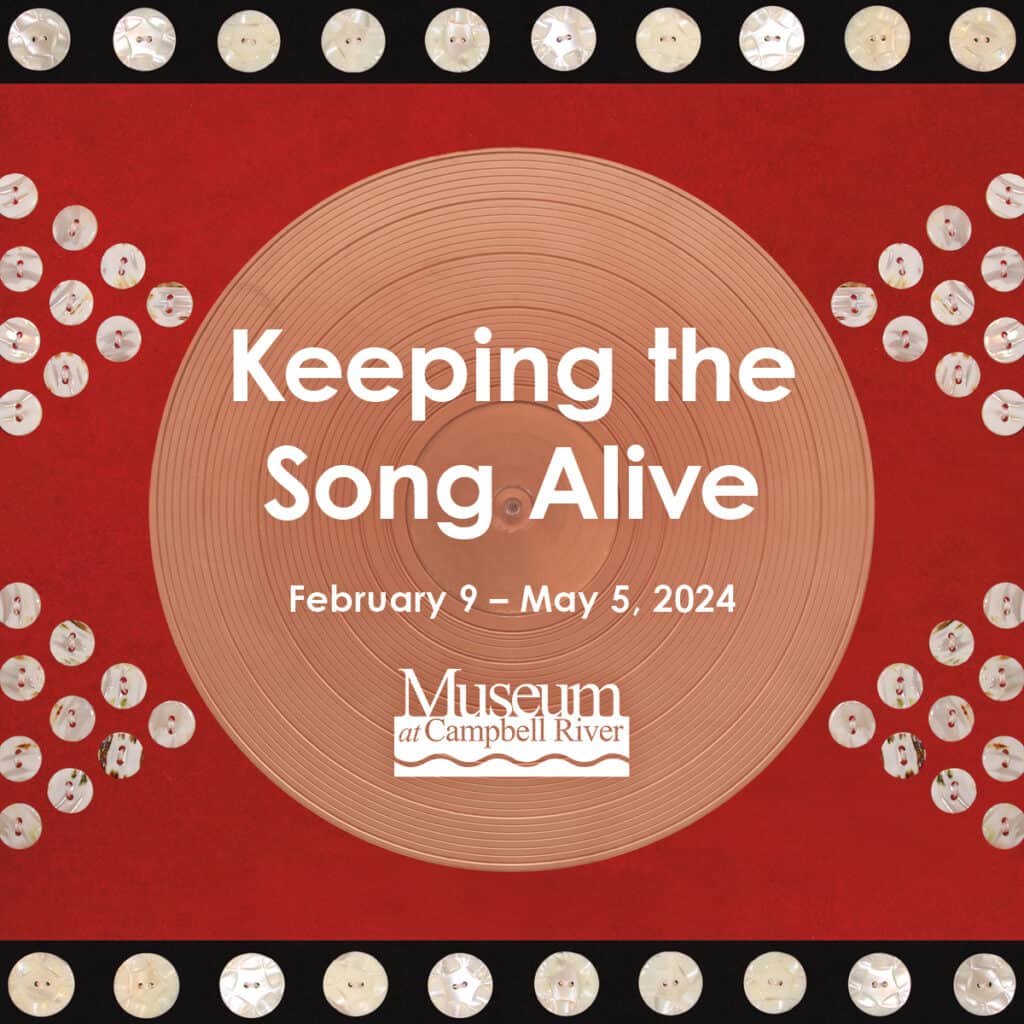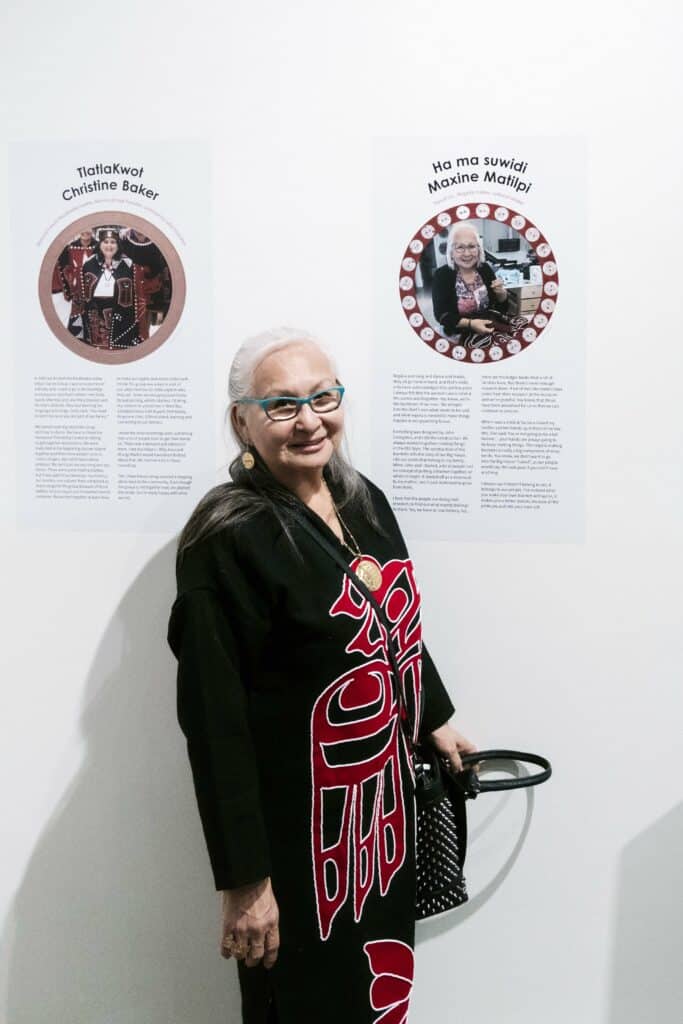The Museum at Campbell River is pleased to be the first stop of a new traveling exhibit Keeping the Song Alive. Developed by the Bill Reid Gallery of Northwest Coast Art, the temporary exhibit is open from February 9 to May 5, 2024. Guest curated by Cheryl Kaka‘solas Wadhams and co-developed with the Jewish Museum & Archives of BC, Keeping the Song Alive shares the mostly unknown story of the decades-long work between ethnomusicologist Dr. Ida Halpern and the late Kwakwaka’wakw Chiefs Billy Assu and Mungo Martin to document hundreds of sacred and traditional songs that otherwise would have been erased due to the Potlatch Ban and suppression of Northwest Coast Indigenous culture.
Through a rich mix of traditional music and regalia, contemporary art, film, and historical documentation, Keeping the Song Alive celebrates a unique friendship, the spiritual power of music, and the beauty of preserving ceremonial art and culture for future generations.
For Kwakwaka’wakw peoples, songs are an essential part of cultural knowledge and ceremonial life, part of the rights and privileges of Chiefs that strengthen identity and lineage. The Big House is a place of belonging where songs, language, drumming, and dancing come together, and where the next generation is continuing these traditions in a good way.
“As a Jewish immigrant fleeing the Holocaust, Dr. Ida Halpern understood the impact of cultural erasure,” says Wadhams, Guest Curator, Keeping the Song Alive. “Assu and Martin trusted her as an ally to preserve and record songs fundamental to the Kwakwaka’wakw culture that would have been lost forever due to the Potlatch Ban. This exhibition reflects on the tremendous impacts of the Potlatch Ban, residential schools, and the Indian Act, and showcases the significant works by contemporary artists that have been inspired by these recordings.”
> Learn more about Dr. Ida Halpern and her life’s work from the Royal BC Museum.


The exhibition features the original audio recorder, records, research notes, and photographs from Dr. Halpern’s career as an ethnomusicologist in Canada, following her escape from Nazi Europe in the 1930s. These significant historical artifacts are displayed alongside contemporary Kwakwaka’wakw artists who are actively responding to the history and meaning of these recordings.
The powerful installation, Concealment, by Andy Everson, combines a kitchen table tea party with potlatch imagery, which recalls a time when his family had to hide their ceremonial activity. A historic headdress by Chief Robert Harris will also be displayed alongside a ceremonial robe, apron, and headdress by artist and community leader Maxine Matilpi.
Visitors will have the chance to listen to a selection of the songs recorded with Chiefs Mungo Martin and Billy Assu in the 1950s. Several films by renowned ‘Na̱ mǥis Filmmaker Barb Cranmer will immerse viewers in the potlatch experience, bringing together songs, dances and drumming in traditional ceremony. A replica potlatch drum log can also be played by visitors.
Kwakwaka’wakw communities continue to work to regain traditional knowledge about the ceremonies that were lost due to colonization. Halpern’s recordings, many completed when it was illegal for Indigenous peoples to practice their culture, are a critical part of this work, regaining one part of what has been lost. In 2017, Halpern’s recordings, which date back to 1947, were added to the UNESCO Canada Memory of the World register.
Keeping the Song Alive, through historical information and a rich and immersive selection of contemporary art, audio, text, photographs and video, offers visitors a chance to better understand the meaning of potlatch and the essentiality of music to ceremony.
We are grateful to Sarmad Al Mouallem for capturing the energy and spirit of the opening reception on February 9th through these beautiful images below.
